Journal Description
Wild
Wild
is an international, peer-reviewed, open access journal on natural systems and dynamics and interactions between primary and secondary environments/species, published quarterly online by MDPI.
- Open Access— free for readers, with article processing charges (APC) paid by authors or their institutions.
- Rapid Publication: first decisions in 19 days; acceptance to publication in 4 days (median values for MDPI journals in the first half of 2025).
- Recognition of Reviewers: APC discount vouchers, optional signed peer review, and reviewer names published annually in the journal.
subject
Imprint Information
Open Access
ISSN: 3042-4526
Latest Articles
Phenotypic and Phytochemical Variability Among Four Populations of Hedeoma multiflora Benth. (Tomillito de las Sierras) Native to the Province of Córdoba—In Situ Evaluation
Wild 2025, 2(3), 33; https://doi.org/10.3390/wild2030033 (registering DOI) - 25 Aug 2025
Abstract
►
Show Figures
Hedeoma multiflora Benth. is an endangered aromatic and medicinal wild species native to Argentina, widely used in traditional medicine, whose cultivation represents a small and untapped sector within the agricultural industry. Current market supply relies on wild harvesting practices by rural communities, leading
[...] Read more.
Hedeoma multiflora Benth. is an endangered aromatic and medicinal wild species native to Argentina, widely used in traditional medicine, whose cultivation represents a small and untapped sector within the agricultural industry. Current market supply relies on wild harvesting practices by rural communities, leading to population decline and genetic diversity loss through inappropriate extraction methods, including uprooting during suboptimal phenological stages. This study evaluated phenotypic and phytochemical variability in four populations of H. multiflora in the province of Córdoba to develop conservation strategies and cultivation protocols. Forty individuals were sampled from each population to analyze morphological, chemical, phenological, edaphological, and climatic variables. Significant differences were observed between populations: Tulumba had the tallest plants and largest leaves, while Bialet Massé had the highest number of internodes. Essential oil yield ranged from 1.01% to 2.10%, with Ongamira having the highest content. Phytochemical analysis revealed two chemotypes: pulegone-dominant (Bialet Massé and Río Cuarto) and menthone-dominant (Ongamira and Tulumba). Phenological patterns differed significantly, with Ongamira showing the greatest reproductive synchronization. Soil organic matter content significantly influenced morphological and chemical traits. The high variability among populations underscores the importance of preserving genetic diversity for domestication and conservation strategies.
Full article
Open AccessArticle
Effects of Siberian Marmot Density in an Anthropogenic Ecosystem on Habitat Vegetation Modification
by
Hiroto Taguchi, Uuganbayar Ganbold, Mai Ikeda, Kurt Ackermann and Buho Hoshino
Wild 2025, 2(3), 32; https://doi.org/10.3390/wild2030032 - 20 Aug 2025
Abstract
►▼
Show Figures
Burrowing mammals function as ecosystem engineers by creating spatial heterogeneity in the soil structure and vegetation composition, thereby providing microhabitats for a wide range of organisms. These keystone species play a crucial role in maintaining local ecosystem functions and delivering ecosystem services. However,
[...] Read more.
Burrowing mammals function as ecosystem engineers by creating spatial heterogeneity in the soil structure and vegetation composition, thereby providing microhabitats for a wide range of organisms. These keystone species play a crucial role in maintaining local ecosystem functions and delivering ecosystem services. However, in Mongolia, where overgrazing has accelerated due to the expansion of a market-based economy, scientific knowledge remains limited regarding the impacts of human activities on such species. In this study, we focused on the Siberian marmot (Marmota sibirica), an ecosystem engineer inhabiting typical Mongolian steppe ecosystems. We assessed the relationship between the spatial distribution of marmot burrows and vegetation conditions both inside and outside Hustai National Park. Burrow locations were recorded in the field, and the Normalized Difference Vegetation Index (NDVI) was calculated, using Planet Lab, Dove-2 satellite imagery (3 m spatial resolution). Through a combination of remote sensing analyses and vegetation surveys, we examined how the presence or absence of anthropogenic disturbance (i.e., livestock grazing) affects the ecological functions of marmots. Our results showed that the distance between active burrows was significantly shorter inside the park (t = −2.68, p = 0.0087), indicating a higher population density. Furthermore, a statistical approach, using beta regression, revealed a significant interaction between the burrow type (active, non-active, off-colony area) and region (inside vs. outside the park) on the NDVI (e.g., outside × non-active: z = −5.229, p < 0.001). Notably, in areas with high grazing pressure outside the park, the variance in the NDVI varied significantly as a function of burrow presence or absence (e.g., July 2023, active vs. off-colony area: F = 133.46, p < 0.001). Combined with vegetation structure data from field surveys, our findings suggest that marmot burrowing activity may contribute to the enhancement of vegetation quality and spatial heterogeneity. These results indicate that the Siberian marmot remains an important component in supporting the diversity and stability of steppe ecosystems, even under intensive grazing pressure. The conservation of this species may thus provide a promising strategy for utilizing native ecosystem engineers in sustainable land-use management.
Full article

Figure 1
Open AccessArticle
From Pets to Wildlife: An Ecological-Phenomenological Approach to Multispecies Tourism
by
Yulei Guo and David Fennell
Wild 2025, 2(3), 31; https://doi.org/10.3390/wild2030031 - 5 Aug 2025
Abstract
►▼
Show Figures
Pet ownership and wildlife tourism are two prominent ways people interact with non-human animals in contemporary contexts. Despite this, there is a need for further exploration of the interconnections between pets, wildlife, and visitors. Utilizing an ecological-phenomenological framework, this study examines how these
[...] Read more.
Pet ownership and wildlife tourism are two prominent ways people interact with non-human animals in contemporary contexts. Despite this, there is a need for further exploration of the interconnections between pets, wildlife, and visitors. Utilizing an ecological-phenomenological framework, this study examines how these multispecies interactions contribute to experiences that extend beyond the human domain. This research is based on a quantitative survey of 1422 participants at the Panda Center that were analyzed using inferential statistical methods to assess differences in visitor experiences. The statistical results reveal that pet ownership and wildlife encounters mediate the environmental affordances and constraints encountered by visitors, creating a dynamic and intricate nexus among pets, wildlife, and tourists. Specifically, pet ownership is shown to enhance both the richness and frequency of wildlife encounters. Nonetheless, the study highlights that human dominance over non-human animals remains a central environmental constraint in multispecies interactions despite the adoption of a more humane approach to animal management through tourism activities.
Full article

Figure 1
Open AccessArticle
Adornments from the Sea: Fish Skins, Heads, Bones, Vertebras, and Otoliths Used by Alaska Natives and Greenlandic Inuit
by
Elisa Palomino
Wild 2025, 2(3), 30; https://doi.org/10.3390/wild2030030 - 4 Aug 2025
Abstract
►▼
Show Figures
This paper investigates the cultural, spiritual, and ecological use and value of fish by-products in the material practices of Alaska Native (Indigenous Peoples are the descendants of the populations who inhabited a geographical region at the time of colonisation and who retain some
[...] Read more.
This paper investigates the cultural, spiritual, and ecological use and value of fish by-products in the material practices of Alaska Native (Indigenous Peoples are the descendants of the populations who inhabited a geographical region at the time of colonisation and who retain some or all of their own social, economic, cultural, and political institutions. In this paper, I use the terms “Indigenous” and “Native” interchangeably. In some countries, one of these terms may be favoured over the other.) and Greenlandic Inuit women. It aims to uncover how fish remnants—skins, bones, bladders, vertebrae, and otoliths—were transformed through tanning, dyeing, and sewing into garments, containers, tools, oils, glues, and adornments, reflecting sustainable systems of knowledge production rooted in Arctic Indigenous lifeways. Drawing on interdisciplinary methods combining Indigenist research, ethnographic records, and sustainability studies, the research contextualises these practices within broader environmental, spiritual, and social frameworks. The findings demonstrate that fish-based technologies were not merely utilitarian but also carried symbolic meanings, linking wearers to ancestral spirits, animal kin, and the marine environment. These traditions persisted even after European contact and the introduction of glass trade beads, reflecting continuity and cultural adaptability. The paper contributes to academic discourse on Indigenous innovation and environmental humanities by offering a culturally grounded model of zero-waste practice and reciprocal ecology. It argues that such ancestral technologies are directly relevant to contemporary sustainability debates in fashion and material design. By documenting these underexamined histories, the study provides valuable insight into Indigenous resilience and offers a critical framework for integrating Indigenous knowledge systems into current sustainability practices.
Full article

Figure 1
Open AccessReview
A Review of Wildlife Strike Reporting in Aviation: Systems, Uses and Standards
by
Dan Parsons, Steven Leib and Wayne L. Martin
Wild 2025, 2(3), 29; https://doi.org/10.3390/wild2030029 - 21 Jul 2025
Abstract
►▼
Show Figures
Wildlife strikes in aviation are among the most reported safety incidents. As such, strikes have become the fundamental unit of understanding of the risk posed by wildlife. However, the management of wildlife risks to aviation has shifted to a hazard management philosophy. This
[...] Read more.
Wildlife strikes in aviation are among the most reported safety incidents. As such, strikes have become the fundamental unit of understanding of the risk posed by wildlife. However, the management of wildlife risks to aviation has shifted to a hazard management philosophy. This literature review examines the argument that current wildlife strike reporting requirements are inadequate for modern wildlife hazard management techniques. This review utilised bibliometric analysis software to identify relevant academic research sourced from the Web of Science, as well as industry materials, to compile a final catalogue (n = 542). Further filtering revealed a limited set of relevant papers (n = 42) and even fewer papers that addressed the above question. Analysis of these papers and the wider catalogue noted limitations in current reporting requirements as they relate to hazard and risk management concepts. This analysis was supplemented with a review of international standards and relevant national requirements, concluding that while academics and industry have adopted systematic safety and hazard management techniques, and international guidance material has kept pace, international standards, the foundation for many national reporting systems, remain decades behind. This paper proposes the use of robust consensus-building methodologies, such as the Delphi technique, in the industry as a means of streamlining and supporting international standards development.
Full article

Figure 1
Open AccessArticle
Ochrolechia raynori, a New Lichen Species from the Southern Rocky Mountains (Colorado, USA) and Key to Asexually Reproducing Ochrolechia in Western North America
by
Erin A. Manzitto-Tripp and Jacob L. Watts
Wild 2025, 2(3), 28; https://doi.org/10.3390/wild2030028 - 14 Jul 2025
Abstract
►▼
Show Figures
Ochrolechia is a diverse and charismatic lineage of both sexually and asexually reproducing lichens, with centers of species richness in northern temperate areas of the world, including North America. As part of recent work to comprehensively inventory the lichens of the Indian Peaks
[...] Read more.
Ochrolechia is a diverse and charismatic lineage of both sexually and asexually reproducing lichens, with centers of species richness in northern temperate areas of the world, including North America. As part of recent work to comprehensively inventory the lichens of the Indian Peaks Wilderness (Arapaho–Roosevelt National Forest, Front Range Mountains, Colorado), we discovered material of a sorediate member of the genus to which no existing names could be applied. This material was collected in very remote, extremely difficult-to-access mid-montane forests of the west slope of the Indian Peaks Wilderness, in a steep and jagged off-trail drainage (Hell Canyon). Subsequent study of this material along with review of pre-existing collections at the COLO Herbarium revealed it to represent a new scientific species. We here formally describe Ochrolechia raynori, in honor of Seth Raynor who led the Indian Peaks Wilderness lichen inventory. We additionally document the occurrence of Dactylospora parasitica on this new lichen species. Ochrolechia raynori is distinctive for its continuous, smooth, shiny thallus that bears discrete soralia and coarse soredia, its occurrence on mosses and other lichens that overgrow rocks, and its chemistry. We generated a molecular phylogeny of this and other members of Ochrolechia using the nrITS locus and show O. raynori to be sister to the widespread, sexually reproducing species O. upsaliensis. This occurrence of an asexual species that is sister to a sexual species is consistent with the “species pair” hypothesis in lichenology, which suggests an intimate role of reproductive mode divergence in the process of speciation. Examination of the phylogeny yielded evidence of four additional pairs in Ochrolechia, for a total of five species pairs, which indicates that this phenomenon may be a common occurrence in this lineage. IUCN Conservation Assessment of Ochrolechia raynori revealed the species to be best considered as Critically Endangered. However, we expect that continued efforts to inventory the lichens of the southern Rocky Mountains, especially in some of its wildest, most remote regions in similar habitats, will likely result in the discovery of additional populations of this remarkable new species.
Full article

Figure 1
Open AccessArticle
Amblyomma mixtum (Acari: Ixodidae) Infestation in Humans in the Flooded Savanna Region of Colombia
by
Arlex Rodríguez-Durán, Diana Peña-Navarro, Vinícius Andrade-Silva, Luís Fernando Parizi, Itabajara da Silva Vaz Junior and Jesús Alfredo Cortés-Vecino
Wild 2025, 2(3), 27; https://doi.org/10.3390/wild2030027 - 14 Jul 2025
Abstract
►▼
Show Figures
Ticks are arthropods responsible for transmitting microorganisms important to wild, domestic, and human animals. In ecosystems where they are distributed, interactions between hosts are a constant risk. This study analyzed voluntary case reports of tick infestations in humans and tick collections from wild
[...] Read more.
Ticks are arthropods responsible for transmitting microorganisms important to wild, domestic, and human animals. In ecosystems where they are distributed, interactions between hosts are a constant risk. This study analyzed voluntary case reports of tick infestations in humans and tick collections from wild and domestic animals in six different locations in the flooded savanna region of the Colombian Orinoquia. Classical and molecular taxonomy were used to identify tick species. Individuals infested with ticks were monitored for clinical manifestations related to tick bites. A total of 22 ticks were found infesting five men and one woman, aged between 9 and 60 years. Both classical and molecular taxonomy confirmed that 100% of the ticks infesting humans and animals were Amblyomma mixtum. Two of the six individuals reported primary and secondary skin reactions during and after the tick bite, including mild-to-severe inflammatory reactions, pruritus, and erythematous papules that persisted up to 72 h. This study provides, for the first time, compiled information on clinical skin manifestations caused by A. mixtum in humans in the flooded savanna region and in Colombia as a whole. These findings serve as a theoretical basis for developing surveillance programs targeting infestations caused by this arthropod.
Full article
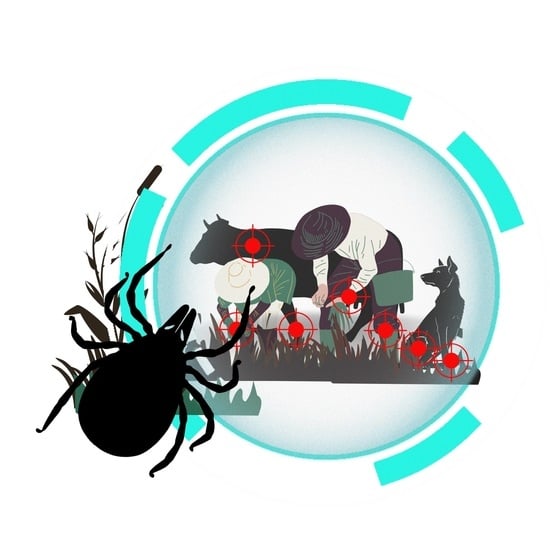
Graphical abstract
Open AccessArticle
Machine Learning-Based Analysis of Community Perceptions on Coastal Forest Ecosystem Services, Restoration Willingness and Their Determinants in Bangladesh
by
Foyez Ahmed Prodhan, Muhammad Ziaul Hoque, K. M. Nafee, Md Shakib Al Fahad and Md Nasifur Rahman Sakib
Wild 2025, 2(3), 26; https://doi.org/10.3390/wild2030026 - 11 Jul 2025
Abstract
►▼
Show Figures
Coastal forests in Bangladesh provide various essential ecosystem services. However, these face severe threats from deforestation, land-use changes, and climate change. Understanding community perceptions of these services and their willingness to support restoration is crucial for effective conservation strategies. To analyze these, this
[...] Read more.
Coastal forests in Bangladesh provide various essential ecosystem services. However, these face severe threats from deforestation, land-use changes, and climate change. Understanding community perceptions of these services and their willingness to support restoration is crucial for effective conservation strategies. To analyze these, this study employs machine learning on survey data collected from Chakaria and Moheshkhali Upazilas of Cox’s Bazar District. Gradient Boosting Machine (GBM) model was used to identify key predictors of restoration willingness and compared with Random Forest (RF) and Generalized Linear Model (GLM). Proximity to forests shapes community priorities with stronger support for restoration among those living near the forest. Higher perception levels were linked to various ecosystem services provided by the forest, while forest dependence, age, and education also influenced perception with education and age showing strong negative correlations. The GBM model outperformed RF and the GLM in predicting restoration willingness due to its ability to capture complex relationships. The perceived importance of provisioning and supporting services and restoration awareness influenced willingness, accounting for 55.56% of the variation. Willingness was also shaped by income, forest dependency and awareness. Overall, this study leverages machine learning to align conservation efforts with socio-economic priorities, ensuring the resilience of Bangladesh’s coastal ecosystems.
Full article

Figure 1
Open AccessEssay
International Law of Abeyance: Our Sovereign Wild
by
Alexandra Carleton
Wild 2025, 2(3), 25; https://doi.org/10.3390/wild2030025 - 1 Jul 2025
Abstract
Ecological ethics is gaining traction. Can this new attitude towards our ecosystems help to motivate a change in our relationship with land and nature? Can we move towards a legal system that supports the legal personality of land, devoid of human ownership? There
[...] Read more.
Ecological ethics is gaining traction. Can this new attitude towards our ecosystems help to motivate a change in our relationship with land and nature? Can we move towards a legal system that supports the legal personality of land, devoid of human ownership? There are substantial amounts of international environmental laws that have been hovering on the fringes of defining and then redefining our relationship with land, with more emphasis on respecting the land as itself rather than as a vehicle with which humanity can gain wealth. This article briefly explores the conjunction of international environmental law history and ecological ethics in the hope that it will encourage a segue in our approach to conservation, ecology, and being.
Full article
Open AccessArticle
Wildlife-Vehicle Collisions as a Threat to Vertebrate Conservation in a Southeastern Mexico Road Network
by
Diana L. Buitrago-Torres, Gilberto Pozo-Montuy, Brandon Brand Buitrago-Marulanda, José Roberto Frías-Aguilar and Mauricio Antonio Mayo Merodio
Wild 2025, 2(3), 24; https://doi.org/10.3390/wild2030024 - 30 Jun 2025
Abstract
►▼
Show Figures
Wildlife-vehicle collisions (WVCs) threaten biodiversity, particularly in the Gulf of Mexico, where road expansion increases habitat fragmentation. This research analyzes WVC patterns in southeastern Mexico, estimating collision rates across road types and assessing environmental factors influencing roadkill frequency. Field monitoring in 2016 and
[...] Read more.
Wildlife-vehicle collisions (WVCs) threaten biodiversity, particularly in the Gulf of Mexico, where road expansion increases habitat fragmentation. This research analyzes WVC patterns in southeastern Mexico, estimating collision rates across road types and assessing environmental factors influencing roadkill frequency. Field monitoring in 2016 and 2023 recorded vertebrate roadkills along roads in Campeche, Chiapas, and Tabasco. Principal Component Analysis (PCA) and Generalized Additive Models (GAM) evaluated landscape influences on WVC occurrences. A total of 354 roadkill incidents involving 73 species of vertebrates were recorded, with mammals accounting for the highest mortality rate. Hotspots were identified along Federal Highway 259 and State Highways Balancán, Frontera-Jonuta, and Salto de Agua. Road type showed no significant effect. Land cover influenced WVCs, with cultivated forests, grasslands, and savannas showing the highest incidences. PCA identified temperature and elevation as key environmental drivers, while GAM suggested elevation had a weak but notable effect. These findings highlight the risks of road expansion in biodiversity-rich areas, where habitat fragmentation and increasing traffic intensify WVCs. Without targeted mitigation strategies, such as wildlife corridors, underpasses, and road signs, expanding infrastructure could further threaten wildlife populations by increasing roadkill rates and fragmenting habitats, particularly in ecologically sensitive landscapes like wetlands, forests, and coastal areas.
Full article

Graphical abstract
Open AccessArticle
Stress and the City: Body Condition, Blood Parameters, Parasite Load, and Stomach Calorimetry of Rural and Urban European Rabbit Populations
by
Madlen Fellmeth, Denise Babitsch, Anne Madel, Marie-Luise Schrödl, Marie-Christin Uhde, Angela Schießl, Bruno Streit, Markus Weinhardt and Bernd Hermann
Wild 2025, 2(2), 23; https://doi.org/10.3390/wild2020023 - 16 Jun 2025
Abstract
►▼
Show Figures
(1) Background: We combined physiological and morphological data of the European rabbit (Oryctolagus cuniculus) to provide insights into the question of how urbanization affects the health of urban wildlife populations. (2) Methods: We dissected 39 urban and 34 rural wild rabbits
[...] Read more.
(1) Background: We combined physiological and morphological data of the European rabbit (Oryctolagus cuniculus) to provide insights into the question of how urbanization affects the health of urban wildlife populations. (2) Methods: We dissected 39 urban and 34 rural wild rabbits in order to compare organ weights, as well as stomach contents. Furthermore, we collected blood and fecal samples. (3) Results: Rural rabbits had a significantly longer body and a higher body weight as well as more fat tissue around their kidneys compared to urban rabbits. In contrast, the stomach, the intestines, the liver, the lung, and the brain of urban rabbits were significantly heavier. The amount of hematocrit, hemoglobin, and the mean corpuscular volume was significantly higher in urban rabbits. The caloric energy content of the stomach was comparable between rural and urban rabbits and was merely influenced by the season being higher in autumn. Rural rabbits had an overall higher mean parasite index compared to urban rabbits. (4) Conclusions: The results of our study allow for a deeper understanding of how density-dependent (e.g., transmission of diseases) and density-independent factors (e.g., food quality) influence the health status and life history traits of urban wildlife populations compared to their rural counterparts.
Full article
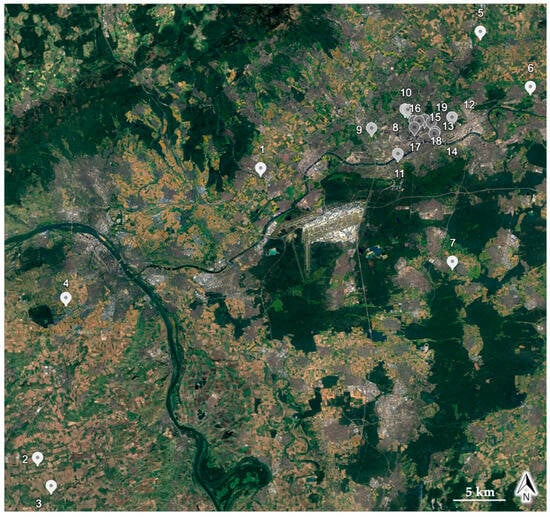
Figure 1
Open AccessCommunication
Agricultural Irrigation Canals Threaten Wild Terrestrial Vertebrates in Northern Chile
by
Pablo Espinoza-Carbullanca and Sebastián Muñoz-Leal
Wild 2025, 2(2), 22; https://doi.org/10.3390/wild2020022 - 9 Jun 2025
Abstract
►▼
Show Figures
Irrigation canals are essential for agriculture in semi-arid regions like northern Chile, yet their ecological impacts on wildlife remain underexplored. Here, we assessed the effects of a 900 m transect of a dry, polyethylene-covered irrigation canal in the Coquimbo region on local terrestrial
[...] Read more.
Irrigation canals are essential for agriculture in semi-arid regions like northern Chile, yet their ecological impacts on wildlife remain underexplored. Here, we assessed the effects of a 900 m transect of a dry, polyethylene-covered irrigation canal in the Coquimbo region on local terrestrial fauna. A total of 121 reptiles, marsupials, and rodents were found in the canal, with 82.64% mortality. Our evidence suggests that the animals drowned when the water flux stopped or perished because of the extreme heat irradiated by the polyethylene geomembrane once the canal became empty. We highlight that these canals act as lethal pitfall traps for terrestrial vertebrates, as seen in other countries. Given the ecological impact that these waterways impose on local fauna, the implementation of mitigation strategies such as physical barriers, escape aids, and connectivity structures to reduce mortality is urgent in the region.
Full article

Figure 1
Open AccessArticle
Economic Valuation of Mangrove Ecosystem Services: Insights from Willingness to Pay Analysis for Chwaka Bay Mangrove Forest, Zanzibar
by
Mohamed Khalfan Mohamed
Wild 2025, 2(2), 21; https://doi.org/10.3390/wild2020021 - 4 Jun 2025
Abstract
►▼
Show Figures
Mangrove ecosystems are vital for coastal protection, fisheries, biodiversity, and local livelihoods, yet they are increasingly threatened by land-use changes, climate impacts, and limited conservation funding. This study investigates how much local communities are willing to pay (WTP) to conserve the Chwaka Bay
[...] Read more.
Mangrove ecosystems are vital for coastal protection, fisheries, biodiversity, and local livelihoods, yet they are increasingly threatened by land-use changes, climate impacts, and limited conservation funding. This study investigates how much local communities are willing to pay (WTP) to conserve the Chwaka Bay mangrove forest in Zanzibar. Using the Contingent Valuation Method (CVM) with a payment card approach, we conducted a structured household survey to assess both monetary contributions and the psychological and socioeconomic factors influencing them. This study is guided by Ajzen’s Theory of Planned Behavior (TPB), incorporating attitudes, subjective norms, perceived behavioral control, and mangrove knowledge. The results show that 68.2% of respondents are willing to pay for mangrove conservation, while 24.2% are not—mainly due to financial constraints or skepticism about fund use. Key drivers of WTP include perceived ecological and livelihood benefits, environmental awareness, and prior conservation involvement. Statistical validation using the Kaiser–Meyer–Olkin (KMO) test and Bartlett’s test of sphericity confirmed the reliability of the model. The findings demonstrate the value of combining behavioral theory with economic valuation to better understand and support community-based conservation strategies. This approach can inform policymakers in designing targeted, transparent, and inclusive mangrove protection programs.
Full article
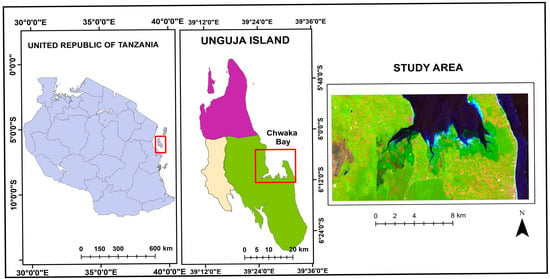
Figure 1
Open AccessArticle
“Rewilding” the Mezcal Market: Cultural Practices and the Conservation of Agaves in Oaxaca, Mexico
by
Ivy Alana Rieger
Wild 2025, 2(2), 20; https://doi.org/10.3390/wild2020020 - 20 May 2025
Cited by 1
Abstract
►▼
Show Figures
This article presents a tentative proposal for biodiversity and endemic agave species conservation from a cultural anthropology perspective based on qualitative ethnographic research with a mezcal-producing community in Oaxaca, Mexico, and a comparative analysis of broader scientific research regarding agaves and mezcal production
[...] Read more.
This article presents a tentative proposal for biodiversity and endemic agave species conservation from a cultural anthropology perspective based on qualitative ethnographic research with a mezcal-producing community in Oaxaca, Mexico, and a comparative analysis of broader scientific research regarding agaves and mezcal production throughout Mexico. I argue that there is an urgent necessity for the implementation of processes of what I call “rewilding” in the mezcal market. Rewilding entails the development and application of locally based strategies that focus on feasible practices of environmental sustainability that can ensure the future of mezcal and the socioeconomic security of those who produce it while protecting biodiversity as follows: reducing the overall rate of mezcal production, establishing practical collaborative networks, implementing feasible reforestation programs, the replanting of endemic agave species, and water-recycling strategies, avoiding the piracy and illegal sale of wild and endangered agave species as well as massive monoculture agave planting projects, and by promoting a return to more “homemade” mezcal production techniques.
Full article

Figure 1
Open AccessArticle
Renesting Propensity of Reintroduced Eastern Migratory Whooping Cranes
by
Hillary L. Thompson, Andrew J. Caven and Nicole M. Gordon
Wild 2025, 2(2), 19; https://doi.org/10.3390/wild2020019 - 19 May 2025
Abstract
►▼
Show Figures
Laying additional clutches of eggs, or renesting, can provide birds with more opportunities to breed each season, ultimately increasing reproductive potential. This is important for long-lived species like cranes, that produce relatively few offspring annually. The reintroduced Eastern Migratory Population (EMP) of endangered
[...] Read more.
Laying additional clutches of eggs, or renesting, can provide birds with more opportunities to breed each season, ultimately increasing reproductive potential. This is important for long-lived species like cranes, that produce relatively few offspring annually. The reintroduced Eastern Migratory Population (EMP) of endangered Whooping Cranes relies on releases of captive-reared juveniles for population growth. Using long-term nest monitoring data, we assessed the renesting propensity of 105 unique pairs of Whooping Cranes during 2005–2024 (n = 359). We used a two-tiered analysis of binomial generalized linear mixed-effects models to evaluate the effects of 15 individual covariates, related to parental age or experience, nest management geography, or chronology. Overall, 37.3% of pairs renested following failed first nesting attempts. We documented higher renesting rates from breeding females that were older or had more years of nesting experience (37.1% increase for each unit increase in female age), pairs outside of the regions in which captive-reared cranes were released (264.0% increase in “other” region compared to Necedah), or that had nests fail earlier in the season (10.1% decline for each day later in the season a first nest failed). Additionally, when eggs were collected from first nests as a part of nest management, pairs were more likely to renest (69.4% renested) than if their nest failed naturally (27.3% renested). Low rates of natural reproduction limit growth rates in the EMP, so understanding effects of management actions and limitations on breeding are important conservation tools which can be applied to other endangered species.
Full article
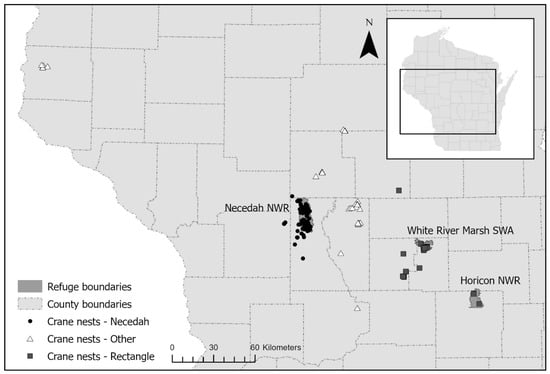
Figure 1
Open AccessArticle
The Travelling Salesbaboon: Chacma Baboon Route Efficiency in Multi-Stop Daily Travel Routes
by
Lynn Lewis-Bevan, Philippa Hammond, Susana Carvalho and Dora Biro
Wild 2025, 2(2), 18; https://doi.org/10.3390/wild2020018 - 8 May 2025
Cited by 1
Abstract
►▼
Show Figures
The ability to navigate through both familiar and unfamiliar environments is of critical importance for foraging efficiency, safety, and energy budgeting in wild animals. For animals that remain in the same home range annually, such as grey-footed chacma baboons (Papio ursinus griseipes
[...] Read more.
The ability to navigate through both familiar and unfamiliar environments is of critical importance for foraging efficiency, safety, and energy budgeting in wild animals. For animals that remain in the same home range annually, such as grey-footed chacma baboons (Papio ursinus griseipes), movement efficiency is expected to reflect familiarity with the home range as well as the nature of the resources within it. For example, resources that are patchy, transient, or seasonal present a greater spatial cognitive challenge, and travel between them may be less efficient than for more widespread or permanent resources. Here, we analyse daily route efficiency in adult female grey-footed chacma baboons at Gorongosa National Park, Mozambique. We use GPS data taken at 15 min intervals from collars deployed on two baboons in each of two study troops (four total) to identify areas of interest used during daily ranging periods (sleep site to sleep site). We then compare the length of the route taken between a given day’s patches to routes calculated by two alternate optimisation heuristics as follows: the nearest neighbour method, in which the subject repeatedly travels to the next most proximate patch and does not necessarily return to the same place, and the Concorde algorithm, which calculates the shortest possible route connecting the day’s patches. We show that baboons travel more efficient routes than those yielded by the nearest-neighbour heuristic but less efficient routes than the Concorde method, implying some degree of route planning. We discuss our novel method of area of interest identification using only remote GPS data, as well as the implications of our findings for primate movement and cognition.
Full article
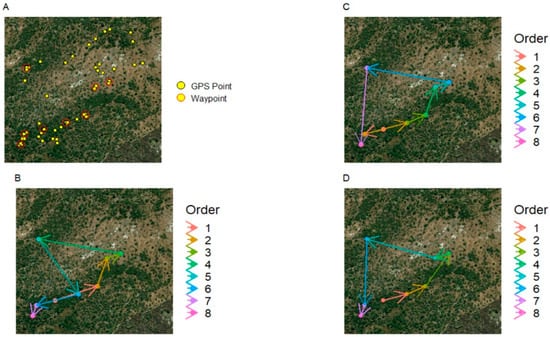
Figure 1
Open AccessReview
Anthropogenic Impacts as a Driver of Sensory Organ Morphology
by
Christopher B. Freelance
Wild 2025, 2(2), 17; https://doi.org/10.3390/wild2020017 - 7 May 2025
Abstract
►▼
Show Figures
All animals require the ability to use visual, auditory, tactile, and olfactory information to survive through activities including locating and identifying conspecifics including potential mates, locating food or shelter, or noticing an approaching predator. Detecting such information invariably requires sensory organs. The morphology
[...] Read more.
All animals require the ability to use visual, auditory, tactile, and olfactory information to survive through activities including locating and identifying conspecifics including potential mates, locating food or shelter, or noticing an approaching predator. Detecting such information invariably requires sensory organs. The morphology of sensory organs evolves under natural selection to optimise the ability to detect salient cues and signals against the background noise in the natural environment. The rapidly proliferating anthropogenic impacts on almost all natural environments include light, noise, and chemical pollution, which can interfere with an animal’s ability to detect visual, acoustic or seismic, and olfactory information, respectively. Many studies examine the resulting changes in the characteristics of signals or the behavioural responses to them in affected natural populations, but very few examine the resulting changes in the sensory organs required to detect the signals; those that do all find evidence of morphological changes. Here, I review the current knowledge on the impact of anthropogenic pollution on sensory organ morphology in wild and captive populations, highlighting knowledge gaps and future directions for addressing them. This is especially important in the context of the growing recognition of the cruciality of sensory ecology in the design of effective threatened species conservation programs and invasive species management strategies.
Full article
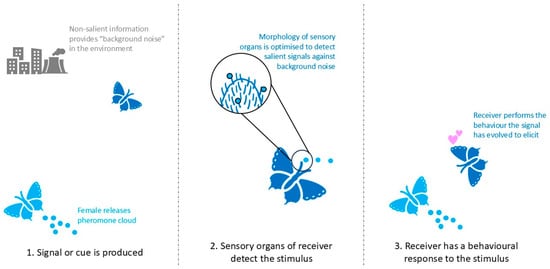
Figure 1
Open AccessArticle
A Collaborative Model for Restorative Compensation in Public Interest Litigation Involving Aquatic Ecology in Guangdong Province, China
by
Ziying Liang and Amanda Whitfort
Wild 2025, 2(2), 16; https://doi.org/10.3390/wild2020016 - 6 May 2025
Abstract
►▼
Show Figures
The Guangdong Province is rich in waterways, including those of the Pearl River. The entire watershed of the Pearl River system spans the territory of six provinces. Considering the overarching objective of building a ‘beautiful Bay Area’ under the guidance of Outline Development
[...] Read more.
The Guangdong Province is rich in waterways, including those of the Pearl River. The entire watershed of the Pearl River system spans the territory of six provinces. Considering the overarching objective of building a ‘beautiful Bay Area’ under the guidance of Outline Development Plan for the Guangdong-Hong Kong-Macao Greater Bay Area as well as the ecological problems that span over river basins and regions in Guandong Province, public interest litigation is a useful tool in protecting the environment. Analyzing 95 first-instance (trial) judgements handed down in Guangdong Province between 2018 and 2021, we sought to evaluate public interest litigation as a means of safeguarding aquatic ecology in the Greater Bay Area (GBA), China. Cases were categorized for: firstly, their approach to determining the extent of ecological damage; secondly, the procedure used for receiving and auditing restorative compensation; thirdly, the collaboration between the court and government departments in the management and use of restorative compensation; and fourthly, the collaborative ‘public–private’ supervision utilized to monitor the implementation of restorative compensation and actual restoration. Our insights are intended to provide guidance for cooperative opportunities in the large transregional water systems and offshore areas of mainland China.
Full article
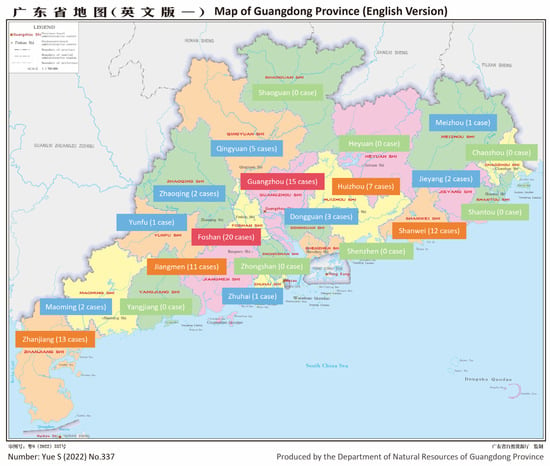
Figure 1
Open AccessArticle
Refining Camera Trap Surveys for Mammal Detection and Diversity Assessment in the Baviaanskloof Catchment, South Africa
by
Maya Beukes, Travis Perry, Daniel M. Parker and Nokubonga Mgqatsa
Wild 2025, 2(2), 15; https://doi.org/10.3390/wild2020015 - 29 Apr 2025
Cited by 1
Abstract
►▼
Show Figures
Conserving biodiversity in mixed-land-use areas is essential, as nearly 80% of South Africa’s wild species exist outside protected areas. This study investigated mammalian diversity within the Baviaanskloof catchment, a mixed-use landscape in the Eastern Cape, South Africa. It also evaluated how camera setup
[...] Read more.
Conserving biodiversity in mixed-land-use areas is essential, as nearly 80% of South Africa’s wild species exist outside protected areas. This study investigated mammalian diversity within the Baviaanskloof catchment, a mixed-use landscape in the Eastern Cape, South Africa. It also evaluated how camera setup parameters impact species detectability. Using 131 camera traps over four survey sessions from January 2020 to April 2022, 34 mammalian species were recorded over 21,020 trap days. Biodiversity indices revealed high species diversity with substantial variability across camera locations. Species discovery reached an asymptote at approximately 153 sampling days, though extended monitoring detected rarer species. Cameras positioned at heights of 40–70 cm improved detection rates, while heights above 100 cm reduced captures. However, elevation effects varied across species, highlighting the need for species-specific optimization. Optimal detection angles ranged from 50 to 90°, with extreme angles decreasing capture frequency. North- and south-facing cameras yielded better detection rates, while west-facing orientations introduced glare and reduced visibility. These findings underscore the biodiversity significance of the Baviaanskloof and emphasize the need to optimize camera configurations to enhance wildlife monitoring and conservation strategies in complex, mixed-use landscapes.
Full article

Graphical abstract
Open AccessSystematic Review
Anthropogenic Impact and Antimicrobial Resistance Occurrence in South American Wild Animals: A Systematic Review and Meta-Analysis
by
Manuel Pérez Maldonado, Constanza Urzúa-Encina, Naomi Ariyama and Patricio Retamal
Wild 2025, 2(2), 14; https://doi.org/10.3390/wild2020014 - 25 Apr 2025
Abstract
►▼
Show Figures
Antimicrobial resistance (AMR) is a significant global challenge that affects environmental, animal, and human health, with reports of antimicrobial-resistant bacteria and antimicrobial resistance genes becoming increasingly common across these domains. This study aimed to systematically review and compare the occurrence of AMR in
[...] Read more.
Antimicrobial resistance (AMR) is a significant global challenge that affects environmental, animal, and human health, with reports of antimicrobial-resistant bacteria and antimicrobial resistance genes becoming increasingly common across these domains. This study aimed to systematically review and compare the occurrence of AMR in bacterial isolates from wild animals in South America, focusing on environments with varying levels of anthropogenic impact. Half of the countries in South America documented AMR in wild animals at least once. Most studies focused on specific animal classes, particularly Aves and Mammalia, with a notable emphasis on the orders Chiroptera and Rodentia, as well as the bacterial species Escherichia coli and Salmonella enterica. Subgroup meta-analyses revealed that, for most antimicrobials, the proportion of AMR was significantly higher in environments with a high anthropogenic impact compared to those with a low anthropogenic impact. However, there were no significant differences between the two types of environments for some antimicrobials. Interestingly, certain beta-lactams showed a higher proportion of AMR in environments with low anthropogenic impact. These findings raise important questions regarding the origins and spread of AMR in wild animals, underscoring the necessity for further research to understand the dynamics of AMR in areas with varying levels of human intervention.
Full article

Figure 1
Highly Accessed Articles
Latest Books
E-Mail Alert
News
Topics
Topic in
Agriculture, Foods, Insects, Forests, Sustainability, Wild
Sustainable Utilization of Insect Biodiversity in Agriculture Forestry and Food Systems Resource Utilization, Food Security and Policy Integration
Topic Editors: Yu Gao, Yunfei Xie, Menglei XuDeadline: 31 March 2026





